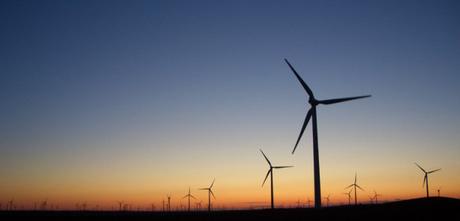Questions About Climate Change and Wildlife Decline
GR: The research and the various projections of how the Earth is warming and how the warming will manifest in planetary events and conditions is based on studies of various indicators of earlier conditions record in sediments and fossils deposited during Earth history. Specialists have calibrated and tested the indicators in many ways and believe the indicators are reliable. So I want to pose a question:
What do we do to prevent a climate cataclysm that threatens life on earth?
We can stop arguing over the cause of the current and forecast warming. It is important only in the way that understanding the cause might help us prevent the catastrophe. There’s some discussion of this question following my prediction of the year that life ends.

Animals & Plants Photography
The Global Wildlife Decline
We must also deal with a related issue. Records of wildlife numbers show that a global decline in large and small animals and plants is underway. The creatures that process fallen leaves, branches, and animals to create soil, the creatures that pollinate the plants that cover and protect the soil from erosion, and the animals that feed on the smaller creatures and prevent pockets of explosive population growth are all disappearing – rapidly. The records are based on thousands of studies conducted over decades and are generally accepted as reliable. Here’s the question:
What are we going to do to prevent an ecological disaster that follows the loss of stable soil and vegetation?
The answer to this question has more dimensions than the climate question. We have to look at species and species groups to see what is causing their decline. We should begin now, because the current direction is toward total disappearance of life on Earth.
It is customary for climate scientists to predict the consequences of global warming and place time scales on the changes. I haven’t seen any detailed studies where scientists projected animal declines to devise time scales for the changes. Here’s my attempt: It’s based on the work of a consortium of groups led by the World Wildlife Fund. The groups have traced changes in animal numbers since 1970. During that period, total numbers of fish, birds, mammals, amphibians, and reptiles declined 58%.
The End of Life on Earth By the Numbers
For my prediction, I’m using the average rate of decline from 1970 to 2012 to predict the year that all vertebrate animal life on earth is gone. The average annual decline the World Wildlife Fund Group observed is 1.38% per year (58% divided by 42 years). If the decline continues at 1.38% per year, numbers would fall by 11% to 69% [58+ (1.38*8)] in the eight years from 2012 to 2020. A simple justification for using the average decline is that animal populations go through cycles of increase and decrease. During the period 1970-2012, some populations probably increased while most declined. An average number (1.38% per year) should blend the increases and decreases.
If the average rate of decline holds steady at 1.38%, the total decline of vertebrates will reach 80% by 2028, 91% by 2036, and 100% sometime in 2042. Since it’s too fantastical to believe that all animals will be gone by 2042, we have to expect that the rate of decline must decrease. However, it is difficult to guess at what point it might stabilize.
Animal numbers will probably continue to fall for at least the next three years. So, by 2020, roughly only three out of the ten animals around us in 1970 will remain. The number will continue to fall, but probably at a slower rate.
Failure to answer either the climate or the wildlife question and pursue the solution will result in global disaster. Much that is beautiful, peaceful, and reliable will go away.

Answering the Climate Question
We’ve known for some time that 2-degree Celsius global warming would result in destructive storms, droughts, and sea-level rise. Below I’ve included part of a European Geosciences Union article from a couple of months ago that provides a bit more explanation of what the warming means for our future and our children’s future, and what we have to do to prevent the problems.
Removing CO2 from the air required to safeguard children’s future
 “Reducing greenhouse-gas emissions is not enough to limit global warming to a level that wouldn’t risk young people’s future, according to a new study by a team of scientists who say we need negative emissions. Measures such as reforestation could accomplish much of the needed CO2 removal from the atmosphere, but continued high fossil fuel emissions would demand expensive technological solutions to extract CO2 and prevent dangerous warming. The study is published today in Earth System Dynamics, a journal of the European Geosciences Union.
“Reducing greenhouse-gas emissions is not enough to limit global warming to a level that wouldn’t risk young people’s future, according to a new study by a team of scientists who say we need negative emissions. Measures such as reforestation could accomplish much of the needed CO2 removal from the atmosphere, but continued high fossil fuel emissions would demand expensive technological solutions to extract CO2 and prevent dangerous warming. The study is published today in Earth System Dynamics, a journal of the European Geosciences Union.
“Continued high fossil fuel emissions would saddle young people with a massive, expensive cleanup problem and growing deleterious climate impacts, which should provide incentive and obligation for governments to alter energy policies without further delay,” says lead-author James Hansen, a professor at the Columbia University Earth Institute in the US, formerly at the NASA Goddard Institute for Space Studies. The team estimates that today’s young people may have to spend up to 500 trillion euros on technologies to extract carbon dioxide from the air, if high emissions continue.
“In contrast, if rapid phase-down of fossil fuels starts soon, CO2 could be removed from the atmosphere at relatively low cost. Better agricultural and forestry practices, including reforestation and improving soils, would then be able to achieve most of the CO2 extraction needed to prevent global-warming’s most dangerous consequences.
A safe target
“Impacts of climate change include more frequent and severe heat waves, storms, floods and droughts, as well as sea-level rise, which could affect millions of people living in coastal areas. “Sea-level rise this century of say half a meter to a metre, which may be inevitable even if emissions decline, would have dire consequences; yet these are dwarfed by the humanitarian and economic disasters that would accompany sea-level rise of several metres,” the team writes in their study, which has been peer-reviewed.
“We show that a target of limiting global warming to no more than +2°C relative to pre-industrial levels is not sufficient, as +2°C would be warmer than the Eemian period, when sea level reached +6-9 metres relative to today,” says Hansen. The Eemian ended some 115,000 years ago and was a warm period in the Earth’s history between two glacial ages.
“The danger, according to the Earth System Dynamics study, is that a long-term global average temperature of +2°C – or even of +1.5°C, the other temperature limit discussed in the 2015 Paris Agreement – could spur ‘slow’ climate feedbacks. In particular, it could lead to partial melting of the ice sheets, which would result in a significant increase in sea-level rise as happened in the Eemian [see note].
“The Hansen-led team says that atmospheric CO2 should be reduced to less than 350 parts per million (ppm) from its present level of about 400 ppm. Global average temperature reached +1.3°C above pre-industrial levels in 2016 and will increase at least a few tenths of a degree more during the next few decades because of the delayed response to past increases in CO2 and other gases. Reduction of CO2 below 350 ppm will cause temperature to peak and slowly decrease to about +1°C later this century. This goal requires negative CO2 emissions, that is, extracting CO2 from the air, in addition to rapid phase-down of fossil fuel emissions.” –European Geosciences Union (EGU – News & Press – Removing CO2 from the air required to safeguard children’s future.)

